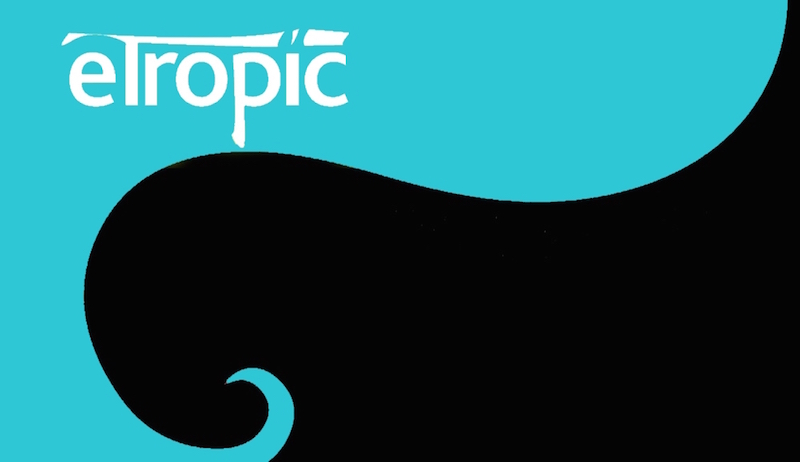Protopian African Futures: Demas Nwoko’s Tropical Architecture, Natural Synthesis—and Solarpunk
DOI:
https://doi.org/10.25120/etropic.24.2.2025.4166Keywords:
Demas Nwoko, tropical African architecture, solarpunk, natural synthesis, Indigenous futures, protopian African futuresAbstract
Pioneering Nigerian artist, architect, and master builder Demas Nwoko’s post-independence practice embodies a synthesis of knowledge systems that transcend the ‘Western’ versus Indigenous knowledge dichotomy typically attached to decolonial readings of African creative and cultural output. This paper argues that Nwoko’s cultural philosophy and metadesign approach, by virtue of the evidence displayed in his tropical African architecture and cultural and intellectual output over seven decades, prefigured solarpunk ideals in very concrete ways, thereby providing a profound case for how the ‘Natural Synthesis’ approach, which his ‘New Culture’ ideology evolved with, finds relevance outside the African context from which it emerged. By referencing key projects and the foundational philosophy, design, and construction methods Nwoko adopted and evolved in responding to architectural needs for a climate-responsive and culturally sensitive approach to architectural problem-solving in the African tropical region in his country of birth—Nigeria, the paper draws parallels between the ecological and sustainability-based concerns that drive the synergistic worldview behind his creative vision with the emerging solarpunk protopian ethos.
References
About African Futures. (n.d.). African Futures. Blog (P. Zvomuya & L. Nkosi Eds.). https://africanfutures.tumblr.com/about
Agartha_Map. (n.d.). Retrieved 9 November 2024, from https://www.agartha.one/map
Arigbabu, A. (2006). The Architecture of Demas Nwoko, Farafina Magazine 4.
Bickersteth, R. (2023, June 21). “Nothing has been built yet in Africa” says Venice Golden Lion-winner Demas Nwoko. Dezeen. https://www.dezeen.com/2023/06/21/demas-nwoko-interview-venice-golden-lion/
Ganiyu, I. (2015). Nwadie, Built to Last. (Unpublished mini comic book). Exhibited during African Futures Exhibition, Lagos
Godwin, J., & Hopwood, G. (2007). The Architecture of Demas Nwoko. Farafina Books.
Hodges, B. K. (2022). Some Things are not held together by Glue: Chunambo and other ‘Sticky Matter’ in Subtropical Macao, China. eTropic, 21(2), 198–216. https://doi.org/10.25120/etropic.21.2.2022.3901
Irving, M., & St John, P. (2008). 1001 buildings you must see before you die. Cassell Illustrated.
john-robert. (2008, April 30). From Steampunk to Solarpunk. Republic of the Bees (blogsite) https://republicofthebees.blogspot.com/2008/04/from-steampunk-to-solarpunk.html
Kandolkar, V. P. (2021). Rain in the Basilica: Protecting Goa’s Bom Jesus from the Ravages of Climate Change. eTropic, 20(2), 95–113. https://doi.org/10.25120/etropic.20.2.2021.3814
La Biennale di Venezia. (2023, March 23). Demas Nwoko Golden Lion for Lifetime Achievement of the Biennale Architettura 2023. https://www.labiennale.org/en/news/demas-nwoko-golden-lion-lifetime-achievement-biennale-architettura-2023
Nwoko, D. (1976). “Children of Paradise.” New Culture Studios.
Okeke-Agulu, C., & Picton, J. (2006). Nationalism and the Rhetoric of Modernism in Nigeria: The Art of Uche Okeke and Demas Nwoko, 1960-1968. African Arts, 39(1), 26-37, 92-93.
Onwuegbucha, I. (n.d.). New Culture: A Review of Contemporary African Arts. Independent Curators International. Retrieved April 11, 2025, from https://curatorsintl.org/about/collaborators/7626-new-culture
Shi, N. (2023, July 10). Protopia: Pre-Figurations of Utopia [Substack newsletter]. Grid Free Minds. https://agartha1.substack.com/p/protopia-pre-figurations-of-utopia
Solarpunk Societies Courses. (n.d.). Retrieved 9 November 2024, from https://agarthamap.notion.site/Solarpunk-Societies-Courses-602381d5f82e421691679ec78c88208a
Stanek, Ł. (2024). Hegemony by Adaptation: Decolonizing Ghana's Construction Industry. Comparative Studies in Society and History, 66(4), 899-932. https://doi.org/10.1017/S0010417524000185
Stop chasing utopia. Create 'protopia' instead. (n.d.). Big Think. Retrieved 15 November 2024, from https://bigthink.com/the-well/protopia/
Táíwò, O. (2022). Against Decolonisation: Taking African agency seriously. Hurst & Company.
THE LINE. (2021, July 13). Dear Alice [Video recording]. https://www.youtube.com/watch?v=z-Ng5ZvrDm4
Waffle To The Left. (2021, October 19). 'Dear Alice' Decommodified Edition | Solarpunk anime ambience with no ads [Video recording]. https://www.youtube.com/watch?v=UqJJktxCY9U
Williams, R. (2019). 'This Shining Confluence of Magic and Technology': Solarpunk, Energy Imaginaries, and the Infrastructures of Solarity. Open Library of Humanities, 5(1), 60. https://doi.org/10.16995/olh.329
Wood, J. (2007). Design for Micro-Utopias: Making the Unthinkable Possible. Gower.
Downloads
Published
How to Cite
Issue
Section
License
Copyright (c) 2025 CC-BY

This work is licensed under a Creative Commons Attribution 4.0 International License.
Authors who submit articles to this journal agree to the following terms:
1. Authors are responsible for ensuring that any material that has influenced the research or writing has been properly cited and credited both in the text and in the Reference List (Bibliography). Contributors are responsible for gaining copyright clearance on figures, photographs or lengthy quotes used in their manuscript that have been published elsewhere.
2. Authors retain copyright and grant the journal right of first publication with the work simultaneously licensed under a Creative Commons Attribution (CC-BY) License that allows others to share and adapt the work with an acknowledgement of the work's authorship and initial publication in this journal.
3. Authors are able to enter into separate, additional contractual arrangements for the non-exclusive distribution of the journal's published version of the work (e.g., post it to an institutional repository, or publish it in a book), with proper acknowledgement of the work's initial publication in this journal.
4. Authors are permitted and encouraged to post their work online (e.g., in institutional repositories or on their website) prior to and during the submission process, as it can lead to productive exchanges, as well as earlier and greater citation of published work (see The Effect of Open Access or The Open Access Citation Advantage). Where authors include such a work in an institutional repository or on their website (i.e., a copy of a work which has been published in eTropic, or a pre-print or post-print version of that work), we request that they include a statement that acknowledges the eTropic publication including the name of the journal, the volume number and a web-link to the journal item.
5. Authors should be aware that the Creative Commons Attribution (CC-BY) License permits readers to share (copy and redistribute the work in any medium or format) and adapt (remix, transform, and build upon the work) for any purpose, even commercially, provided they also give appropriate credit to the work, provide a link to the license, and indicate if changes were made. They may do these things in any reasonable manner, but not in any way that suggests you or your publisher endorses their use.
